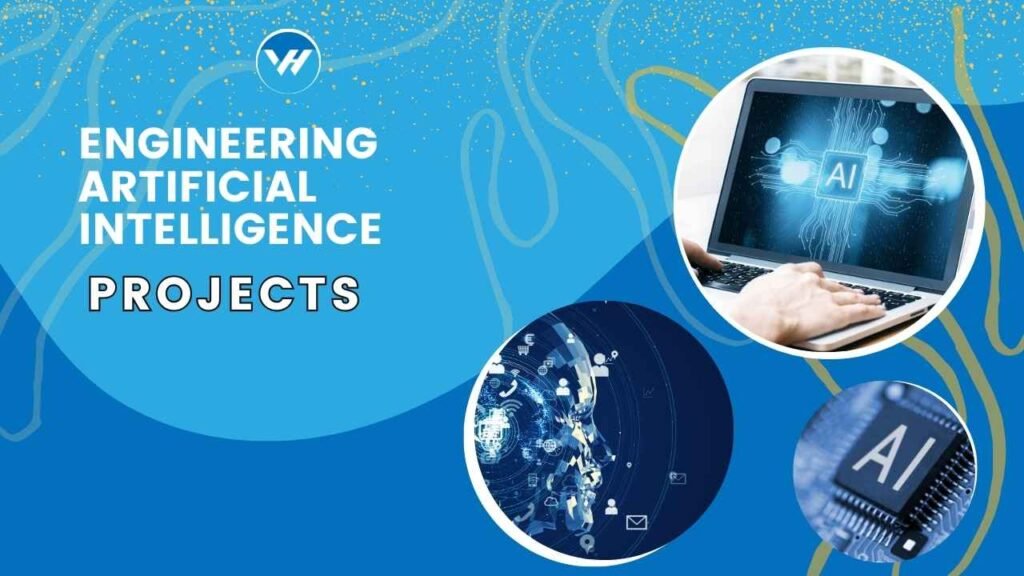Welcome to the world of Artificial Intelligence (AI), where the boundaries of technology and innovation blur into a realm of endless possibilities. If you’re embarking on engineering AI projects, you’re stepping into a field that’s as challenging as it is exciting. But why is AI such a big deal? Simply put, AI is transforming industries, enhancing efficiencies, and creating solutions we once thought were science fiction. In this guide, we’ll explore the various aspects of engineering AI projects, from understanding the basics to overcoming challenges and utilizing tools effectively.

Table of Contents
ToggleWhat is Artificial Intelligence?
Artificial Intelligence is a branch of computer science dedicated to creating systems capable of performing tasks that typically require human intelligence. These tasks include learning, reasoning, problem-solving, perception, and language understanding. AI systems can range from simple algorithms to complex neural networks that mimic human brain functions.
Why Engineering AI Projects is Important
Engineering AI projects is crucial because it pushes the boundaries of what technology can achieve. It involves designing and implementing solutions that can analyze data, make decisions, and interact with the world in ways that can revolutionize sectors like healthcare, finance, and transportation. By tackling AI projects, you’re not just solving technical problems; you’re contributing to advancements that can significantly impact everyday life.
Types of Artificial Intelligence Projects
When diving into AI projects, you’ll encounter various types, each with its unique focus and methodologies.
Machine Learning Projects
Machine Learning (ML) is a subset of AI that deals with the development of algorithms that allow computers to learn from and make predictions based on data. Here are two common types of ML projects:
- Supervised Learning: This involves training a model on a labeled dataset, where the outcomes are already known. For example, predicting house prices based on historical data involves supervised learning.
- Unsupervised Learning: Unlike supervised learning, unsupervised learning deals with unlabeled data. The goal is to find hidden patterns or intrinsic structures in the data. Clustering customer data to segment them into different groups is a classic example.
Natural Language Processing Projects
Natural Language Processing (NLP) focuses on enabling computers to understand and interact using human language. Projects in this area might involve chatbots, sentiment analysis, or language translation systems. NLP projects are particularly challenging due to the complexity and nuance of human language.
Computer Vision Projects
Computer Vision enables machines to interpret and make decisions based on visual input from the world. This can include image recognition, object detection, and facial recognition. Applications range from autonomous vehicles to medical imaging.
Robotics and Automation Projects
Robotics involves creating robots that can perform tasks autonomously or semi-autonomously. Automation projects might focus on developing systems that can handle repetitive tasks, improve efficiency, and reduce human intervention in various processes.
Key Considerations in AI Project Engineering
Embarking on an AI project requires careful planning and consideration of several factors:
Defining Project Scope and Objectives
Before you start, clearly define what you want to achieve. This includes outlining the problem you’re solving, the expected outcomes, and the resources you’ll need. A well-defined scope ensures that the project stays on track and meets its goals.
Data Collection and Preparation
Data is the lifeblood of AI projects. You need to gather relevant data and ensure it’s clean and structured. This might involve data scraping, preprocessing, and ensuring that the dataset is diverse and representative.
Choosing the Right Algorithms
Selecting the appropriate algorithms is crucial. The choice depends on the type of problem you’re addressing and the nature of your data. For instance, neural networks are often used for complex pattern recognition tasks, while decision trees might be used for simpler classification problems.
Model Training and Validation
Once you’ve chosen your algorithm, you’ll need to train your model using your dataset. This involves feeding the data into the model, adjusting parameters, and validating the model’s performance. It’s essential to evaluate the model using techniques like cross-validation to ensure it generalizes well to new data.
Deployment and Integration
After training and validating your model, the next step is deployment. This involves integrating the AI solution into the existing system or environment where it will operate. Proper deployment ensures that the model performs well in real-world scenarios.
Tools and Technologies for AI Projects
To engineer successful AI projects, you’ll need to leverage various tools and technologies:
Programming Languages and Frameworks
- Python: The go-to language for AI due to its extensive libraries and ease of use.
- R: Often used for statistical analysis and visualization.
- Frameworks: TensorFlow, PyTorch, and Scikit-Learn are popular frameworks for developing AI models.
Cloud Platforms and Services
Cloud platforms like AWS, Google Cloud, and Azure offer powerful tools and services for building, training, and deploying AI models. They provide scalable resources and specialized services like machine learning APIs and data storage solutions.
Development Environments and IDEs
Integrated Development Environments (IDEs) like Jupyter Notebook and PyCharm facilitate coding and testing AI models. They provide features like code completion, debugging tools, and visualizations that can enhance productivity.
Challenges in Engineering AI Projects
Even with the best tools, AI projects come with their share of challenges:
Data Quality and Quantity
High-quality, sufficient data is essential for training effective AI models. Poor data can lead to inaccurate predictions and biased results. Ensuring data integrity and diversity is a significant challenge.
Model Accuracy and Bias
Achieving high model accuracy while avoiding biases is a delicate balance. AI models can inherit biases from the training data, leading to skewed results. Regular evaluation and adjustments are necessary to mitigate these issues.
Computational Resources
Training complex AI models requires substantial computational power. Access to high-performance GPUs and cloud resources can be costly and may pose a challenge for some projects.
Ethical and Privacy Concerns
AI projects must address ethical considerations, including privacy concerns and the potential for misuse. Ensuring that AI systems are designed with ethical guidelines in mind is crucial for their responsible deployment.
Best Practices for Successful AI Projects
To ensure the success of your AI projects, follow these best practices:
Continuous Learning and Improvement
AI is a rapidly evolving field. Staying updated with the latest research, techniques, and tools is essential for maintaining the relevance and effectiveness of your projects.
Collaboration and Teamwork
AI projects often require collaboration across different expertise areas. Working with a diverse team can bring new perspectives and enhance the quality of the project.
Keeping Up with AI Trends
AI is a dynamic field with constant advancements. Regularly reviewing industry trends and technological advancements can help you stay ahead and leverage new opportunities.
How Virtual Help Can Assist with AI Projects
Navigating the complexities of AI projects can be challenging, but you don’t have to do it alone. Virtual Help provides valuable support:
Finding Expert Tutors and Mentors
Virtual Help connects you with experienced tutors and mentors who can guide you through your AI project, offer insights, and help you overcome obstacles.
Getting Assignment Help and Project Guidance
Whether you need help with specific assignments or general project guidance, Virtual Help’s platform offers access to experts who can provide personalized assistance.
Utilizing Virtual Help’s Tools and Resources
Virtual Help offers a range of tools and resources designed to support your learning and project development. From tutorials to interactive platforms, these resources can enhance your AI project experience.
Conclusion
Engineering AI projects is an exciting and challenging endeavor that offers immense potential for innovation. By understanding the types of AI projects, considering key factors, and utilizing the right tools, you can navigate this complex field effectively. Remember, whether you’re dealing with data, algorithms, or deployment, Virtual Help is here to support you every step of the way. Embrace the journey of AI project engineering, and let your creativity and technical skills drive you towards groundbreaking solutions.
FAQs
What are the most common types of AI projects?
The most common types include machine learning projects (supervised and unsupervised learning), natural language processing projects, computer vision projects, and robotics and automation projects.
How do I choose the right algorithm for my AI project?
Choosing the right algorithm depends on the nature of your data and the problem you’re solving. Consider factors like the type of data (labeled or unlabeled), the complexity of the task, and the computational resources available.
What are some common challenges in AI project engineering?
Common challenges include data quality and quantity, achieving model accuracy and avoiding bias, managing computational resources, and addressing ethical and privacy concerns.
How can Virtual Help support my AI project?
Virtual Help provides expert tutors, project guidance, and valuable resources to assist with your AI project. Their platform connects you with professionals who can help you navigate complex issues and enhance your learning experience.
What skills are essential for working on AI projects?
Key skills include proficiency in programming languages (especially Python), understanding of machine learning algorithms, data analysis and preprocessing, and familiarity with AI tools and frameworks.





